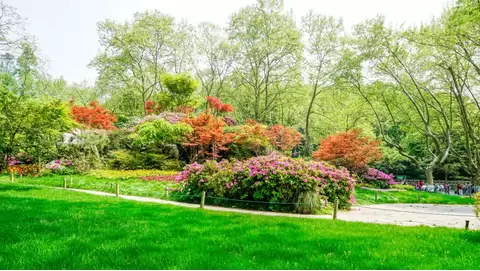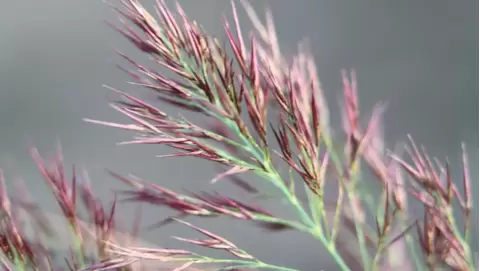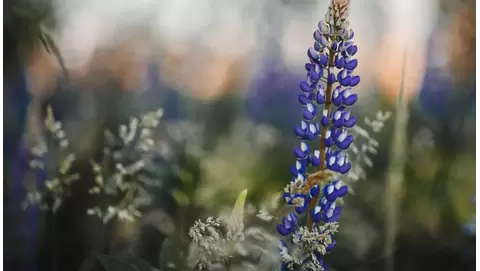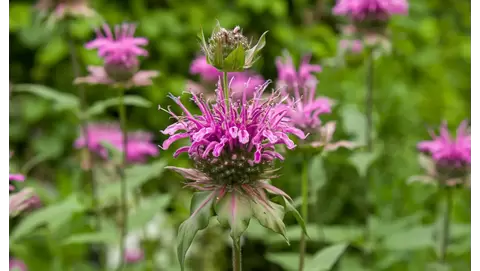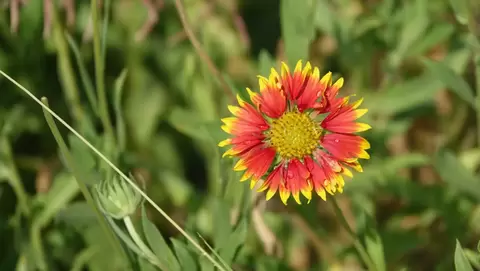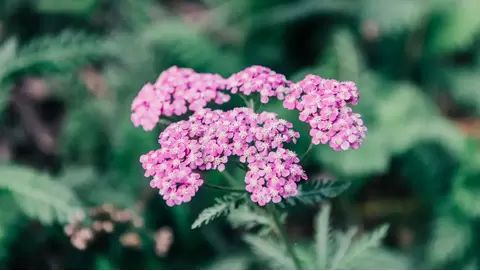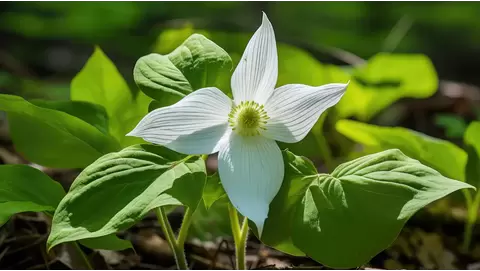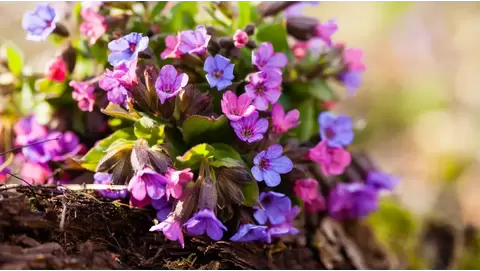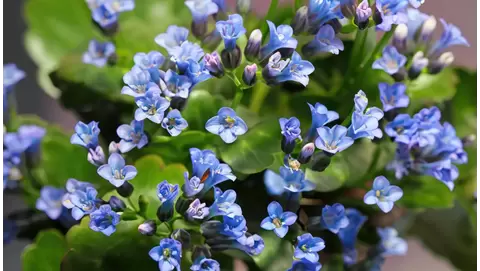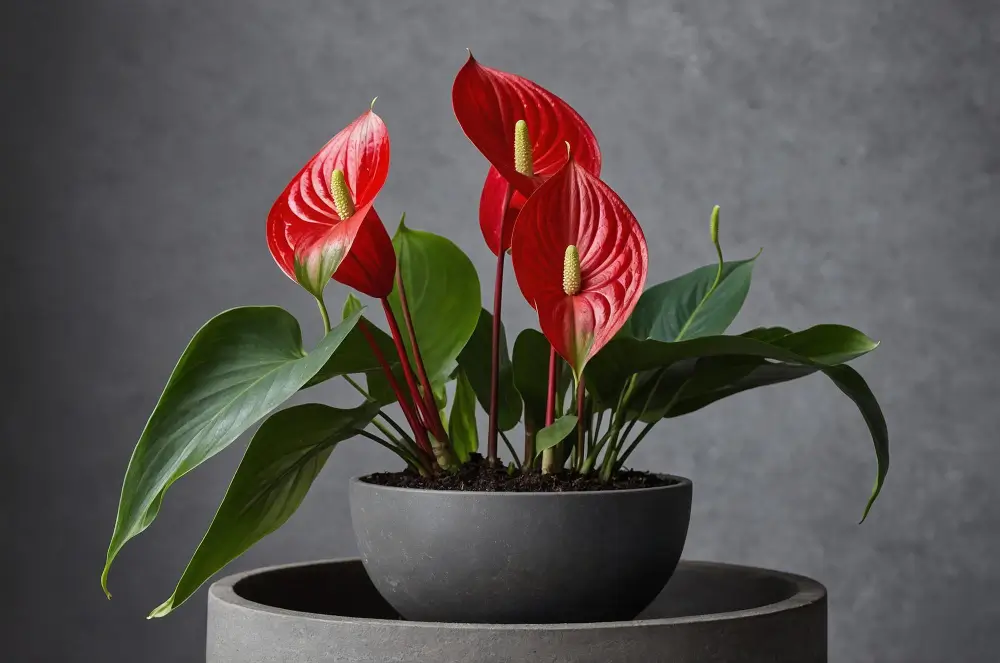
Anthurium care: How to keep your Flamingo Flower blooming
Houseplants are becoming very popular these days as they bring life to rooms and create a happier atmosphere. Their beauty, along with their calming effect, draws the attention of many people as the indoor gardening trend grows. Taking care of these indoor plants seems like a rewarding pastime, and it is enjoyable to see them flourish.
Anthurium plants are wonderful additions to an indoor plant collection. With their lovely look and simple care needs, they offer beauty without requiring too much work. Anthurium, commonly called flamingo flowers, offers beauty for those who enjoy plants. Bright, shiny blooms provide vibrant color to any space.
These tropical plants are available in various shades, like red, pink, white, and purple, and have flowers that last for an extended period. The distinct shape and texture of Anthurium give indoor spaces a creative touch. For thriving indoor environments, Anthurium brings a slice of lush rainforests into homes, improving beauty and air quality.
Indoor plant lovers should visit Growcycle to find the best Anthurium. Their collection includes many types of this colorful plant, all grown with care. Sustainable growing practices are their priority, making these plants beautiful and a great choice for a healthy environment.
History of Anthurium Plant
Anthurium plant has a rich history that starts in Central and South America. These plants thrive in bright, tropical places. They were first found in the 1800s. The Greek words for "flower" and "tail," which characterize the shape of the spadix, are the source of the name "Anthurium."
Anthurium belongs to the Araceae family, which has many types of flowering plants. Their beautiful appearance makes them popular, leading to many new hybrid varieties. Today, Anthurium is valued for its looks and cultural meaning, symbolizing warmth and friendliness in many traditions.
Botany of Anthurium
Anthurium grows from 12 to 36 inches tall, which works well in indoor spaces. Their bright green leaves and colorful flowers bring life to any room and create a warm, tropical feel, making the environment cheerful and welcoming. The leaves of Anthurium have a special, waxy feel that helps them stay beautiful for a long time.
While many indoor plants lose their charm quickly, Anthurium keeps their bright look for weeks, making them a top choice for decorating any space.
Its flowers are special because of their shiny, heart-shaped leaves. They have bright and colorful spathes that catch the eye. The spathe looks like a flower petal but is a unique kind of leaf. These spathes come in beautiful colors like deep red, vibrant pink, soft white, and bright purple. Inside each spathe is a spadix. This spike-shaped part is covered in small flowers, adding to the plant's charm.
Salient Features of Anthurium Plant
The key characteristics of the Anthurium plant are:
Low Maintenance
Anthuriums are easy to care for, which makes them a great choice for anyone who likes plants. A simple care routine means enjoying the beauty of an Anthurium without worrying about extensive upkeep.
Versatile Aesthetics
Whether modern or traditional, bright colors and unique shapes make Anthurium a great match for many types of decoration styles. These plants fit nicely in different places, serving as a standout piece on a coffee table or blending into a bigger indoor garden. Their flexibility allows them to enhance the look of any environment, adding beauty and charm everywhere they go.
Air Purifying Qualities
Anthuriums are not only beautiful but also help improve the air. These plants can filter out harmful substances from the air. Adding Anthurium to a home brightens the atmosphere while creating a fresher and healthier environment.
Extended Blooming Period
One of the most exciting things about Anthurium is how long they bloom. When properly cared for, their bright spathes can stay beautiful for weeks or even months, bringing continuous color and charm. This long-lasting feature makes this plant a fantastic option for adding a cheerful vibe to any home or office space.
Symbolic Significance
Anthuriums have special meanings connected to warmth and kindness. These beautiful plants often serve as gifts, showing appreciation and care. They offer more than just a pretty decoration, adding a personal touch to gift giving and special moments and sending a message of love and good wishes.
Types of Anthurium
There are over 1,000 species of Anthurium, each with unique characteristics. The following are the most popular types:
Anthurium Andreanum
Anthurium andreanum shines brightly among the many types of Anthurium. Its heart-shaped spathes come in vibrant red, pink, and white colors, making it a true eye-catcher. This variety is often chosen for floral arrangements because its blooms last long, adding charm and beauty to any display.
Anthurium Clarinervium
The Anthurium clarinervium stands out because of its lovely leaves. The big, soft leaves have bold white veins that catch the eye, adding beauty to any room. This type of Anthurium brings a sense of elegance and texture, making it a popular choice for anyone who enjoys having plants around.
Anthurium Forgetii
The Anthurium forgetii is a small and beautiful plant. Its heart-shaped leaves, which are deep green and have beautiful patterns, really stand out. This plant is perfect for those who like unique leaves. It adds charm to any collection and shows the classic beauty of Anthurium.
Anthurium Scherzerianum
Curly spathes give the Anthurium scherzerianum a fun look. Its bright orange and red colors add energy and happiness, making this plant perfect for making any indoor space more lively and cheerful.
Anthurium Plowmanii
With its big, lush leaves, Anthurium Plowmanii grabs attention and makes any space pop. In humid environments, this plant thrives and has the ability to reach considerable size, thus adding an exotic touch that boosts the brightness of any space.
How to Choose the Right Type of Anthurium?
Choosing the right Anthurium for a space involves a few key points to find a good fit.
- Start by looking at the light available in the area. Some types do well in bright, indirect light, while others, like Anthurium clarinervium, enjoy shadier spots.
- Next, think about the appearance and size of the plant. For a striking piece, Anthurium plowmanii, with its big leaves, is a great choice, while Anthurium forgetii offers a more subtle and gentle appearance.
- Keep maintenance of the plant in mind while selecting the right Anthurium; for those new to taking care of plants, Anthurium scherzerianum is a forgiving choice that helps build confidence.
- Lastly, consider the meaning behind the plants; selecting an Anthurium that holds special significance can deepen one's connection to it, whether for personal enjoyment or as a heartfelt gift.
Essential Care Practices to Grow Anthurium
Growing Anthurium plant can be a delightful experience if people follow these essential steps:
Selecting the Right Soil
The successful flourishing of Anthurium begins by choosing the right soil. These plants thrive in soil that allows water to drain away, which keeps roots healthy and prevents excess moisture. To keep moisture without waterlogging, a good mix is premium potting soil mixed with organic elements like peat moss or coconut coir.
Adding elements such as perlite or orchid bark improves airflow and drainage, reducing the risk of root rot. The ideal soil pH for Anthurium is slightly acidic, ranging from 5.5 to 6.5, allowing optimal nutrient absorption.
Avoiding heavy, easily compacted soils is crucial since they can impede root growth and harm plants. Establishing a healthy soil environment is crucial for growing anthuriums with stunning flowers and vibrant leaves.
Proper Watering Techniques
Watering Anthurium plants adequately is important for keeping them healthy and helping them grow. Start by checking the soil with a finger about an inch deep. If the soil is dry, it's time to water. Water the plant sufficiently to ensure that moisture gets to the roots and escapes through the bottom of the pot. Take care not to overwater these plants, as this can result in root rot, a common problem in plants.
The use of room temperature water prevents shock in the plant, although rainfall or distilled water is preferable to tap water, as it may include potentially hazardous contaminants. Occasionally misting the leaves can also help since Anthuriums enjoy humid conditions. Following these watering tips can lead to healthy growth and beautiful flowers.
Optimal Light Conditions
Maintaining Anthurium's health and strength requires the proper lighting. Bright, indirect light that mimics the shadow found beneath larger trees is ideal for these plants. Too much direct sunlight may damage their leaves, resulting in brown spots that hinder growth. Anthuriums should ideally receive six to eight hours of filtered light per day.
For indoor growing, placing them near east—or north-facing windows offers the gentler light they prefer. When natural light is not enough, using grow lights can help provide the right amount without the problems of direct sunlight. If leaves start to stretch towards a light source, it often means there isn't enough light. Conversely, brown or yellow leaves may be an indication of excessive light.
Temperature Control
The ideal temperature range for Anthuriums is between 65°F and 80°F. Since sudden temperature fluctuations can be dangerous, it is crucial to keep them away from heating vents and cold gusts.
Humidity Levels
Anthurium plants love humid environments, so keeping humidity levels just right is key for strong growth. The optimal humidity range for these plants is 60–80%. Misting the leaves can be quite effective in increasing humidity.
Furthermore, surrounding the plant with a humidity tray filled with water and pebbles produces a damp atmosphere. Another excellent method to increase the amount of moisture in the air is to use a humidifier nearby.
Fertilizing Routine
Fertilizing Anthurium helps keep them healthy and encourages bright flowers. A balanced, water-soluble fertilizer mixed half-strength with water is a good option. Once fall and winter arrive and the plants grow slower, the need for fertilizing decreases, and it can even be stopped during those months.
Repotting
It's crucial to repot an Anthurium every few years or when the plant outgrows its container. New soil helps deliver better nutrients, which keeps the plant healthy. Fresh soil also helps with drainage, ensuring water does not build up or harm the roots.
Rotating the pot every so often helps the leaves grow better and recover properly. This allows each side of the plant to get light evenly, keeping the shape balanced and the colors bright.
Pruning and Maintenance
Check the Anthurium often for dead or yellow leaves and remove them to help the plant grow well. Pruning also keeps the plant looking nice and helps new leaves grow. Using clean and sharp scissors to remove unwanted parts will keep the plant tidy and healthy.
Impact of Container Type on Anthurium Growth
Different types of containers can impact the growth of Anthurium, such as:
Terracotta Containers
Terracotta pots are great for letting air circulate and can help soak up extra moisture from the soil. This is useful for Anthuriums since they prefer their soil to be a bit dry between waterings. Terracotta's porosity allows air to get to the roots, lowering the possibility of root rot.
Ceramic Containers
Ceramic pots, especially glazed ones, are better at keeping moisture than terracotta pots. This helps Anthuriums by keeping the humidity level inside the pot constant. However, these ceramic pots need careful drainage monitoring, as they don't allow as much airflow as terracotta options do.
Plastic Containers
Plastic pots are light and flexible. They effectively hold moisture, which helps Anthuriums enjoy humid conditions. However, having enough drainage holes in the pots is necessary to avoid too much water in the soil.
Choosing the Right Container Matters
When choosing a container for an Anthurium, moisture retention, drainage, and air circulation must be carefully considered. Each kind of container has advantages and disadvantages. The best container should meet the needs of the Anthurium while also matching the surrounding growing conditions. This thoughtful selection can significantly affect how well the plant grows and stays healthy.
Benefits of Anthurium Plant
Anthuriums offer several benefits beyond their stunning appearance:
Mood Enhancement
Indoor plants can brighten moods, lower stress levels, and make people more productive. The bright colors and rich leaves of Anthuriums help to make any room feel cheerful and relaxing.
Longevity
Anthuriums are known for their longevity. Proper care allows them to thrive for many years, making them a lasting addition to a home or workspace. They provide beauty and benefits over time.
Educational Value
Caring for Anthuriums provides a great learning opportunity, particularly for children or those new to gardening. Observing their growth cycles, water needs, and lighting requirements can foster an appreciation for plant life and ecology.
Challenges and Solutions for Anthurium Care
Anthuriums are usually easy to care for, but they can encounter common issues affecting their growth and well-being.
- Overwatering is a major problem that can lead to root rot and yellowing or wilting foliage.
- Not getting enough light can also make the plant grow tall and weak as the leaves try to reach for the light.
- Pests, including mealybugs, spider mites, and aphids, can harm plants. Regular checks for these pests help keep plants healthy.
A regular care routine is essential to address these challenges. Gardeners must start by following a proper watering schedule, ensuring the soil's top inch dries out before watering again to prevent excess moisture.
Plants thrive when placed in areas with bright, indirect light. This encourages healthy growth and coloration.
Checking the leaves for pests regularly allows for quick action if any are found, and using insecticidal soap or neem oil can effectively get rid of them. Moreover, ensuring the right humidity levels and providing occasional fertilizer helps encourage strong growth, allowing the Anthurium to flourish in its surroundings.
FAQs
How often should one water the Anthurium?
Water the Anthurium when the top inch of the soil is dry. This usually requires watering every one to two weeks, but the frequency can change depending on the space's humidity or temperature.
Can I grow Anthuriums outdoors?
Anthuriums can be grown outside in warm climates, such as tropical or subtropical regions. They must be set up in a shaded area with some indirect sunlight. The soil needs to drain properly for the plants to remain healthy.
Are Anthuriums toxic to pets?
Anthuriums are harmful to pets when eaten. Keeping these plants out of reach from curious cats and dogs can help avoid any dangers.
The Bottom Line
Anthuriums are multipurpose houseplants that improve the aesthetic value, practicality, and air quality of any given room. Their year-round blooms, air-purifying qualities, and low-maintenance nature make them a perfect addition to any home or office.
Explore Growcycle to find the right gardening tools and products to grow the Anthurium plant well. Choosing them means selecting a plant that combines quality, strength, and visual appeal in one exceptional choice.
Disclaimer: This material is for informational purposes only and should not be relied on for legal, medical, financial, or other professional advice.



